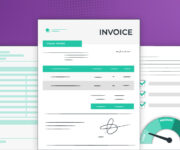As our economy became the fifth largest in the world, the Micro, Small, and Medium Enterprises (MSME) sector contributed about 29% of our GDP and nearly 50% of the total exports. The availability of funds is the most important challenge they face. Traditional financing methods like term loans, cash credits, and overdrafts are often inadequate to meet the requirements of the MSME industry. In this evolving business environment, invoice financing is more responsive to the funding needs of MSME firms.
As India is poised to become a $5 trillion economy in the next 2-3 years, the government plans to increase the MSMEs’ contribution to GDP from 29% to 50%. This expectation is evident through government initiatives like Make in India, Aatmanirbhar Bharat, Vocal for Local, etc., aimed to boost confidence in the micro, small, and medium businesses in India. One can view invoice financing as a reliable funding solution in such an environment.
Cash Flow Management in MSMEs
MSMEs must continuously adapt, update, and reinvent to stay relevant in a volatile market environment. Earlier this year, the Parliamentary Standing Committee on Finance noted an estimated credit gap of Rs.20-25 lakh crore in the MSME sector. The Chairman of the committee pointed out that delayed payments are the biggest problems small firms face.
Stretched credit periods strain small businesses. These firms are at a disadvantage as they have to buy raw materials with cash and sell products on credit. On the other hand, their corporate clients can buy materials on credit and sell finished goods for cash.
In such situations, invoice financing can help MSMEs maintain positive cash flow in their business operations.
How Traditional Financing Methods Fall Short in Supporting MSMEs
Though banks, and non-banking financial companies (NBFCs) are providing financing solutions to MSMEs, the banking sector is relectuant to grant credit to micro, medium, and small industry. The small ticket size of loans, lower profit margins, non-availability of collateral security, lack of borrower’s credit history, etc., are some reasons why banks and NBFCs hesitate to extend credit to MSME players.
For banks, the credit process remains the same but with a lesser profit margin, whether it is a small ticket or a high-value loan. Often, budding businesses cannot come up with assets needed as collateral for securing loans. That is where invoice financing becomes a go-to funding option for MSMEs. Funding through invoice financing doesn’t need collaterals. It is especially suitable for the service industry, which may not have fixed assets like heavy machinery or tangible finished goods for providing sureties.
Cash Flow-Based Financing vs Asset-Based Financing
Term loans and cash credits are asset-based lending products. This means that credit is secured through collateral. Compared to traditional funding options, invoice finance frees the borrower from the additional financial burden of acquiring assets to keep the cash flow smooth. The unpaid invoices serve as securities for the borrowing limits.
In asset-based financing, the MSMEs have another disadvantage concerning the amount they can draw as cash credit or avail as loans. The value of the collateral also limits the firm’s credit eligibility.
Too much exposure to unsecured advances negatively impacts the bank’s balance sheet, which is why banks don’t extend collateral-free advances to MSMEs.
Invoice Financing: The Advantages for MSMEs
With more facilities for financing receivables, this mode is slowly becoming the in-demand funding option for MSMEs. Invoice financing offers numerous advantages for businesses to grow. Some of these include:
- A financing facility customised to the MSME requirements– Invoice financing is a short-term funding option aligned more with the MSME industry than the banking framework. As a result, it provides greater flexibility, transparency, and customisation options for business firms. There is no lock-in period, down payment or minimum drawdown requirements, floating interest rates, or monthly EMI commitments. Businesses can increase and decrease credit as needed.
- Minimal balance sheet disruptions– Invoice financing does not create debts but speeds up the payment of the invoices. Quick cash availability boosts productivity and accelerates the production cycle without compromising balance sheet strength.
- Competitive funding options with digital invoice discounting platforms– Electronic platforms like the Trade Receivables Discounting System (TReDS) provide a broader range of services. Businesses are no longer limited by geography when selecting the best funding option. On TReDS, a small entrepreneur from Himachal Pradesh could get a competitive bid for his invoices from a Mumbai-based lender.
Summing Up
Recent policy initiatives such as The Factoring Regulation (Amendment) Bill, 2021, the mandatory TReDS registration for all companies with a turnover of more than Rs.500 crores, etc., indicate that invoice finance is becoming a game changer for MSMEs.
Let us conclude with the interesting case of Goa, the first state in India to onboard TReDS and utilise the convenience of invoice financing. The government of Goa cleared its outstanding dues with 250 MSMEs through the TReDS system. Such examples encourage more participants to engage in invoice financing. It will also help boost traditional bankers’ confidence to move away from asset-based financing to more proactive cash flow-based funding.
Finezza brings a gamut of solutions to help banks and NBFCs cut through the tedious loan management process. Manually organising and managing loan portfolios takes up productive time. Finezza’s state-of-the-art tools such as Loan Management System, Loan Origination System, Collection Delinquency Management, Bank Statement Analyser, etc, help banks and NBFCs to streamline their lending procedures.
Get in touch with us to know how our products can solve your procedural hassles.




Leave a Reply